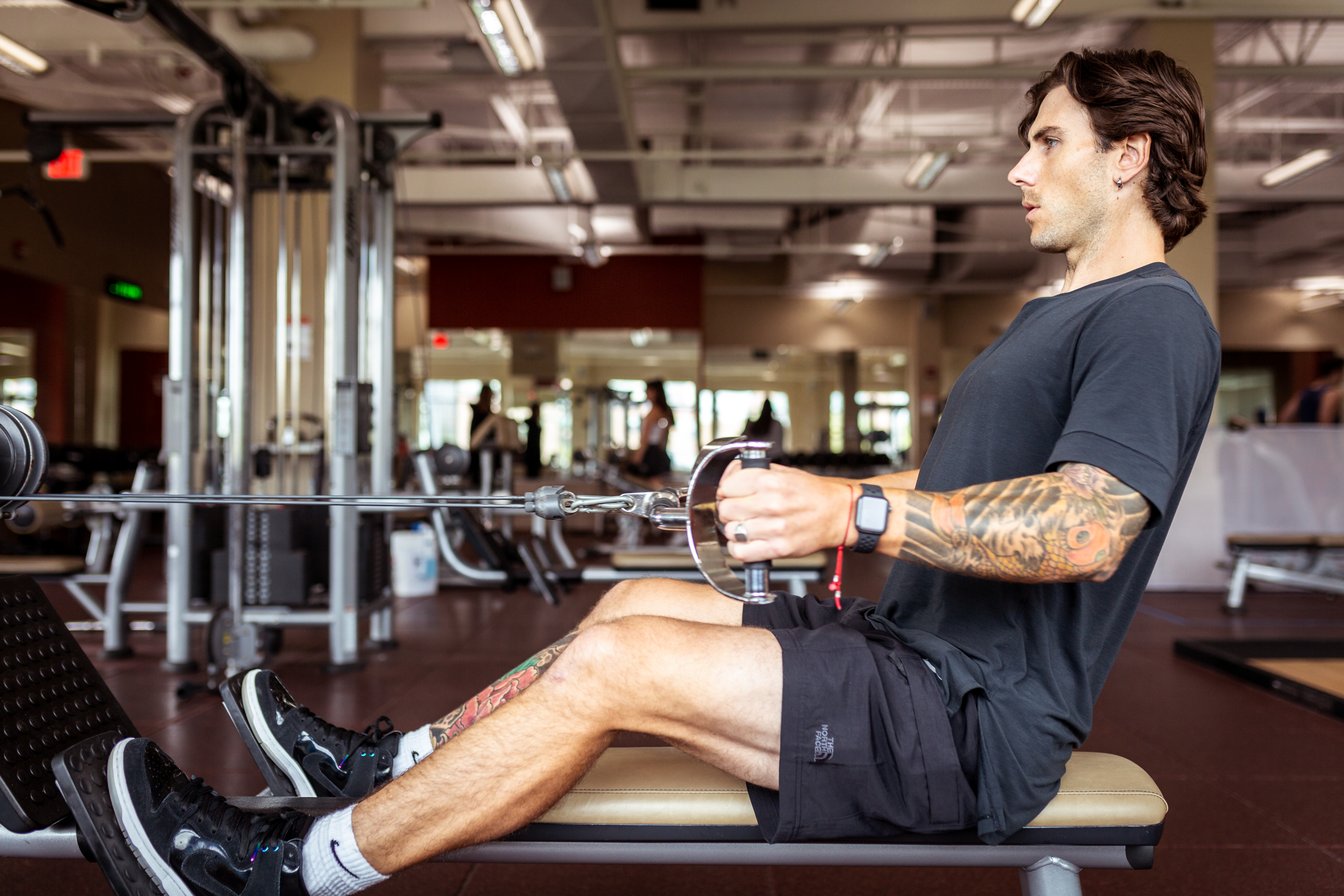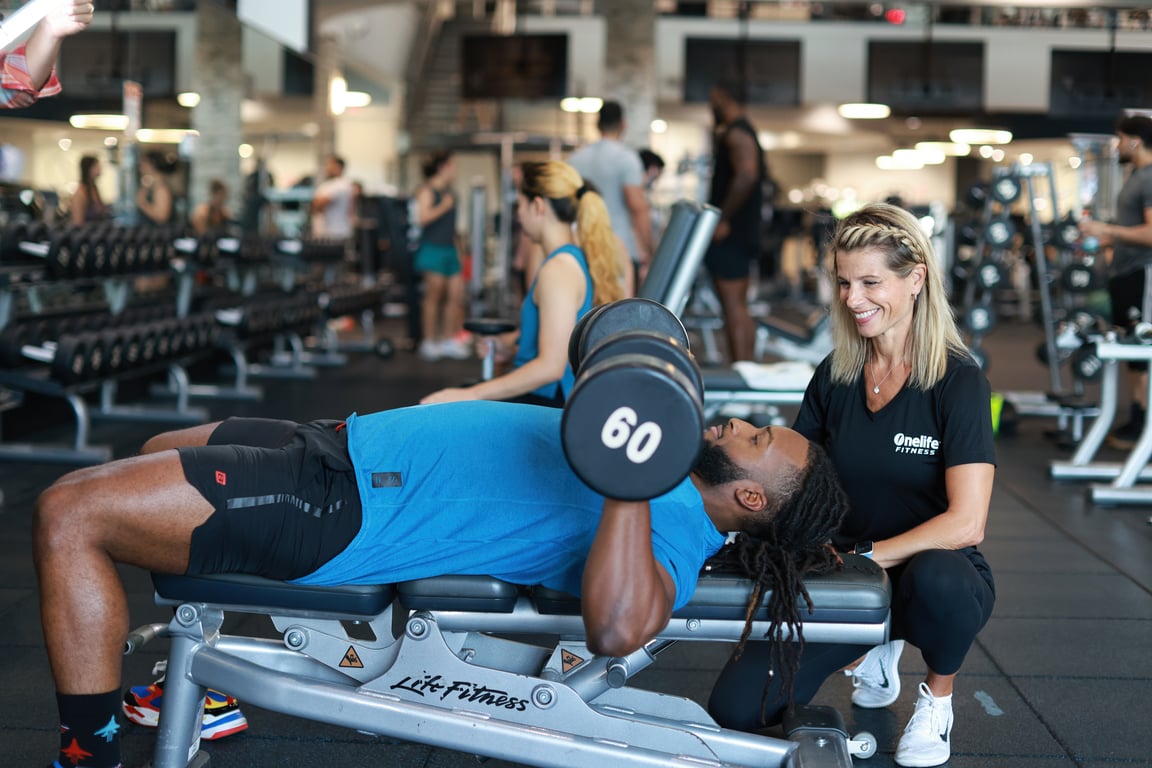Maximize Cardiovascular Benefits with High-Intensity Interval Training
Maximize Cardiovascular Benefits with High-Intensity Interval Training
Navigating the hustle and bustle of everyday life often leaves little room for hitting the gym or lacing up those running shoes. The struggle to balance our schedules with keeping our hearts healthy is all too familiar—a genuine concern when considering the priceless benefits of staying active.
We know this dilemma firsthand and sympathize with that quest for an efficient way to boost heart health. Enter high-intensity interval training (HIIT): a beacon of hope for time-strapped individuals seeking significant cardiovascular improvement.
Research points to HIIT as a powerhouse capable of enhancing peak oxygen consumption more impressively than its moderate-exercise counterparts.
In this article, we unpack HIIT's potential to revolutionize your fitness journey, boldly offering tangible health rewards within the confines of your busy world. Let us guide you through how a few minutes can lead to monumental gains—are you ready to embrace this transformative approach? Stay tuned!
Key Takeaways
- High-intensity interval training (HIIT) offers efficient workouts, enhancing peak oxygen consumption and cardiovascular function in at least 10 minutes.
- HIIT reduces heart disease risk factors such as blood pressure and cholesterol levels, making it beneficial for cardiac rehabilitation and prevention of heart failure.
- In addition to cardiovascular benefits, HIIT leads to decreased body fat, improved metabolic health, and positive effects on mental well-being.
Explaining High-Intensity Interval Training (HIIT)

High-intensity Interval Training, or HIIT, shakes our workouts with intense exercise alternated with brief recovery periods. We're talking about heart-pumping activities like sprinting or burpees that push our limits for anywhere from 20 to 90 seconds.
After this burst of activity, we cool down with slower exercises such as walking or stretching – but just for a short while before ramping things back up again. The beauty of HIIT lies in its flexibility; whether you prefer cycling, swimming, or bodyweight moves, these principles can be applied to many types of exercise.
This training style is all about efficiency. We maximize cardiovascular benefits without spending hours at the gym – sessions can be as short as 10 minutes and still pack a punch! It's perfect for our busy lives: quick cycles that elevate our heart rate and allow us to catch our breath, keep us engaged and make every second count.
Plus, no fancy equipment is necessary; we can do most HIIT workouts right in our living room if we choose to. The focus on high effort levels followed by recovery trains our muscles and fortifies the health of our hearts and minds.
The Cardiovascular Benefits of HIIT

Much like traditional cardio exercises, HIIT can improve cardiac function and reduce the risk factors for heart disease, including blood pressure and cholesterol levels.
Enhanced cardiac function
Through High-Intensity Interval Training, we see our hearts working more efficiently. By pushing our cardiovascular systems into short, intense bursts of activity followed by brief rest periods, HIIT encourages the heart to pump blood more vigorously.
This is about exercise performance, not just a quick fix; these workouts lead to enhanced cardiac function over time. Our hearts improve at handling physical stress, so daily activities are less taxing on our cardiac health.
Let's embrace the power of HIIT for our hearts' sake! Studies show that this aerobic exercise can benefit those undergoing cardiac rehabilitation or looking to prevent heart failure.
The boost in heart performance from such training surpasses what we typically gain from moderate exercise alone. With regular HIIT sessions, we're not just breaking a sweat – we're actively fortifying one of the most vital organs in our bodies against future challenges.
Reduction in heart disease risk factors
High-intensity interval training (HIIT) is a powerful way to lose weight and slash key heart disease risk factors. This dynamic form of physical activity not only shreds body fat but also boosts cardiovascular health more effectively than steady exercises like jogging.
The intense bursts of exercise and rest intervals force our hearts to adapt and grow stronger, like how resistance training builds skeletal muscle.
Studies illuminate the remarkable impact HIIT has on our bodies; one particularly noteworthy 2015 study revealed that just ten weeks of HIIT can mirror the cardio and metabolic advantages traditionally associated with lengthier moderate-intensity workouts.
Imagine improving your heart's health while exercising significantly less—HIIT makes this possible. By integrating these less vigorous exercise routines into our lives, we set ourselves on a path to lower risks of chronic conditions such as coronary artery disease and reduce levels of harmful LDL—the bad cholesterol linked to heart problems.
Improvement in blood pressure and cholesterol levels
We've all heard that checking our blood pressure and cholesterol levels is essential. High-Intensity Interval Training, or HIIT, gets our hearts racing and can bring these crucial health markers into healthier ranges.
- Enhances heart performance: Engaging in HIIT prompts your heart to pump more efficiently. This increased cardiovascular effort can lead to lower resting heart rates and improved cardiac function, much like a well-oiled machine.
- Lowers high blood pressure: If you're struggling with hypertension, incorporating HIIT could be a game-changer. This exercise creates immediate and longer-term effects that help reduce blood pressure, giving your arteries much-needed relief.
- Reduces bad cholesterol: While we need some cholesterol for good health, too much of the wrong kind spells trouble. HIIT training turns up your body's fat-burning capabilities, leading to a decrease in LDL cholesterol—the type that clogs your arteries—while potentially hiking up the good HDL levels.
- Stabilizes blood sugar: Controlling blood sugar plays a part in keeping your heart healthy. Quick bursts of high-intensity exercise improve insulin sensitivity, which means your body can manage glucose better, preventing spikes that could harm your vascular system.
- Aids weight management: Shedding excess pounds often results in better blood pressure and cholesterol profiles. Through intense workouts like HIIT, you torch calories fast and target abdominal fat—a known risk factor for cardiovascular conditions.
Additional Health Benefits of HIIT
HIIT also helps decrease body fat, boost metabolic health, and positively affect mental well-being. Ready to learn more? Keep reading for the full scoop on maximizing cardiovascular benefits with high-intensity interval training!
Decreased body fat
HIIT has been proven to be highly effective in reducing body fat. Research suggests High-Intensity Interval Training can significantly reduce body fat more than steady-state exercises like jogging.
The intense bursts of activity during HIIT workouts stimulate the metabolism, resulting in increased calorie burn during the workout and throughout the day due to the afterburn effect.
This means that even after completing a HIIT session, the body continues burning calories at an elevated rate, aiding in fat loss over time.
Boosted metabolic health
HIIT can significantly enhance metabolic health by improving insulin sensitivity and increasing the body's capacity to burn fat for energy. This form of training has been found to elevate the body's post-exercise oxygen consumption (EPOC), leading to a sustained increase in metabolism post-workout.
The high-intensity intervals stimulate muscle protein synthesis, improving muscle mass and increasing calorie expenditure at rest. Studies have shown that HIIT can effectively enhance metabolic health in individuals with conditions such as obesity, type 2 diabetes, and metabolic syndrome, making it an effective strategy for improving overall health and fitness.
Research indicates that HIIT not only aids in decreasing body fat but also plays a crucial role in regulating blood sugar levels and optimizing lipid profiles. Additionally, the ability of HIIT to boost metabolic health is vital for individuals striving to achieve sustainable weight management goals while promoting long-term cardiovascular wellness.
Positive effects on mental well-being
HIIT has been found to offer mental health benefits, reducing the severity of depression and enhancing overall well-being. Short HIIT workouts have shown promising results in improving mental and physical health for individuals with psychiatric conditions, leading to decreased levels of depression and social avoidance.
HIIT's potential mental health benefits highlight its holistic impact on physical and emotional wellness, providing an effective avenue for managing mental well-being alongside cardiovascular fitness.
The psychiatric community recognizes the value of incorporating HIIT into treatment plans for individuals with comorbid conditions, as it offers a multifaceted approach toward enhancing mental well-being while also addressing physical health concerns.
Time Efficiency of HIIT Workouts

HIIT workouts offer a quick and effective way to get in a beneficial workout, making them adaptable for busy lifestyles.
Quick and effective workout sessions
HIIT is known for its quick and efficient nature, making it an ideal choice for busy individuals seeking to maximize their cardiovascular benefits in minimal time. With short bursts of intense exercise followed by brief recovery periods, HIIT allows for a complete workout session in as little as 15-20 minutes.
Research has shown that these high-intensity intervals effectively elevate heart rate and enhance cardiovascular function, improving overall fitness levels with decreased body fat and increased metabolic health.
By engaging in regular HIIT sessions, individuals can efficiently boost their cardiovascular endurance while reaping the benefits of reduced heart disease risk factors such as improved blood pressure and cholesterol levels.
Adaptable routines for busy lifestyles
Adapting to a hectic schedule can be challenging, but HIIT offers time-effective workouts that fit into busy lifestyles. We can engage in quick and efficient workout sessions without sacrificing the cardiovascular benefits.
These adaptable routines provide an accessible option for individuals who struggle to incorporate physical activity into their daily exercise routine due to various obligations.
Implementing the HIIT exercise as part of daily life can significantly enhance cardiac function and reduce heart disease risk factors while accommodating even the busiest schedules.
HIIT Workout Tips for Beginners
-
Start with a thorough warm-up to prepare your body for the intense bursts of activity during HIIT workouts. This can include light jogging, jumping jacks, or dynamic stretching.
-
Choose exercises that you enjoy and that work multiple muscle groups, such as burpees, mountain climbers, or high knees.
-
Begin with shorter intervals of high intensity (e.g., 20 seconds) followed by more extended periods of low-intensity recovery (e.g., 40 seconds). As you build endurance, gradually increase the duration of high-intensity intervals.
-
Listen to your body and take rest when needed. It's important to push yourself during the intense intervals, but not at the expense of safety and proper form.
-
Stay hydrated before, during, and after your workout to support your body's performance and recovery.
-
Gradually increase the frequency and intensity of your HIIT sessions as your fitness level improves, but be mindful not to overdo it too quickly.
-
Pay attention to proper nutrition and fuel your body with healthy foods to support your energy levels and recovery from intense workouts.
By following these tips for beginners, you can ease into HIIT training safely and effectively while maximizing its cardiovascular benefits. Remember that consistency is key – aim for regular sessions to see the best results!
Precautions and safety measures for HIIT training sessions
As fitness enthusiasts, taking precautions and safety measures when engaging in High-Intensity Interval Training (HIIT) is vital to ensure a safe and effective workout. Here are some essential tips to consider:
-
Always consult with a healthcare professional, especially if you have any existing cardiovascular conditions, to ensure that HIIT is safe.
-
Start slowly and gradually increase the intensity of your workouts to prevent overexertion and potential injury.
-
Proper warm-up and cool-down exercises are crucial before and after HIIT sessions to prevent muscle soreness and reduce the risk of injury.
-
Pay attention to your body's signals during HIIT - stay hydrated, listen to your body, and avoid pushing beyond personal limits, especially if you're new to high-intensity exercises.
-
Monitor your heart rate throughout the workout, ensuring it stays within a safe range for your fitness level.
-
Focus on proper form and technique to prevent injuries during high-intensity exercises - don't sacrifice form for speed or intensity.
-
Modify exercises as necessary, especially if you have joint or muscular issues, to prevent exacerbating existing conditions.
Conclusion
To maximize cardiovascular benefits with High-Intensity Interval Training (HIIT), emphasize short bursts of higher-intensity exercise followed by lower to moderate-intensity exercise for several cycles.
Increased oxygen consumption (peak VO2) is associated with a healthier heart and longer life. Incorporate HIIT with any exercise modality, including body weight as the exercise or weight training modality.
Gauge rest breaks using the rating of perceived exertion scale by Borg to start another interval at intervals ranging from 10 to 120 seconds. HIIT is more potent in increasing peak VO2 in a shorter period than moderate-intensity continuous training and maybe just as effective at reducing abdominal fat over time as moderate-intensity ongoing training.
Contact Onelife Fitness for ways to maximize cardiovascular benefits with HIIT workouts.
FAQs
1. What are the cardio benefits of High-Intensity Interval Training (HIIT)?
High-Intensity Interval Training, or HIIT, helps strengthen your heart, increases vasodilation for better blood flow, and can be key in body fat reduction to improve overall cardiovascular health.
2. Can doing HIIT help me if I'm overweight and concerned about my heart?
Yes, HIIT workouts can lower body mass index (BMI) and have been shown to burn calories and offer cardio benefits even for those who are overweight, as confirmed by exercise physiologists.
3. Does following a specific HIIT protocol like Tabata have special heart advantages?
The Tabata protocol is a form of HIIT known to maximize cardiovascular benefits through intense bursts of activity followed by brief rest periods; it's designed specifically to significantly boost your anaerobic and aerobic capacity.
4. Should someone with heart conditions consult their doctor before starting HIIT?
Absolutely! If you have heart issues such as aortic stenosis or if you're a post-heart transplant, checking with your cardiologist or medical professional at institutions like the Mayo Clinic before beginning any high-intensity endurance training is crucial for safety.
5. Is there evidence that shows how HIIT can affect mental illnesses linked to cardiovascular health?
Research suggests that regular physical activity, including HIIT, may positively impact certain aspects of mental well-being while improving cardiovascular fitness, which could relate inversely to conditions such as schizophrenia.
Contact Onelife Fitness for your FREE PASS and all our gym classes across GA, MD, VA, DC & WV. We look forward to helping you on your health and fitness journey!